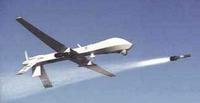-
Twitter’s information policy frustrates police, delights customers
Twitter’s robust approach to customers’ privacy has caused consternation among law enforcement agencies, who say that Twitter’s refusal to hand over information on users of the service, except in rare cases, has frustrated criminal investigations. Twitter’s user, though, appreciate the company’s scruples.
-
-
Military electronic devices disappear into the surroundings after use

Electronic devices have become necessary for military operations, but it is almost impossible to track and recover every device. At the end of operations, these devices are often found scattered across the battlefield and might be captured by the enemy and repurposed or studied to compromise DoD’s strategic technological advantage. New DARPA program — Vanishing Programmable Resources (VAPR) program — seeks transient electronics, that is, devices which would maintain the current functionality and ruggedness of conventional electronics, but, when triggered, be able to degrade partially or completely into their surroundings.
-
-
Biometric workshop studied voice, dental, oral standards
The National Institute of Standards and Technology (NIST) hosted a workshop to discuss proposed supplements to the biometric data format standard that support voice recognition, dental and oral data, disaster victim identification, and special data needs for mobile ID applications.
-
-
U.S. to build drone base in Niger

With the war in Mali raging, the U.S. Africa Command is now establishing a drone base in northwest Africa in order to bolster U.S. surveillance – and operational — capabilities against Islamist groups in the region. Initially, the drones flying from the base will conduct unarmed surveillance missions, but there is little doubt that if targets present themselves, these drones will be equipped with missiles and go on hunting-killing missions.
-
-
Laser scanner documents crimes scenes quickly, accurately
The Carlsbad, California police is using a new laser scanner to capture what happened at crime scene. Thenew technology cuts the time it takes to document a crime scene, from the size of the room to the bullet holes in the wall, by up to 80 percent.
-
-
DoD to use connections to stay ahead of cyber threats
The Department of Defense (DoD) maintains one of the largest computer networks in the world. The network follows DoD personnel across the globe collecting, transferring, and processing information in forms as diverse as data warehouses, in-the-field mobile devices, and mission computers on board F-18’s. New program looks at how information is connected and moves to uncover and prevent targeted attacks.
-
-
French forces push deep into north Mali, capture Gao

French military forces, supported by Malian forces, continue to push north into Islamist-controlled north Mali, and on Saturday captured the strategic city of Gao. French prime minister Jean-Marc Ayrault said that having chased the Islamists out of the Gao region, the French force was closing in on Timbuktu, north Mali’s main city. The initial phase of the military operation consists of liberating the large population centers of north Mali from Islamist control, and chasing the jihadists into the empty desert – and do so before the rainy season begins in March.
-
-
U.S. bolsters its military capabilities in the Gulf

The United States has bolstered its military capabilities in the Gulf by stationing six stealth F-22 Raptors at the al Dafra air base, 150 miles from Iran. The F-22 is the most advanced plane in the U.S. arsenal – and also the most expensive, at about $150 million a plane. The F-22 can carry eight smart bombs which it can simultaneously direct at four different targets on the ground – and do so at supersonic speed while evading enemy’s radar.
-
-
Nebraska lawmakers look to limit police drone use
The Federal Aviation Administration says there will be around 30,000 commercial and government drones flying over the United States in the next ten years. The business of selling and servicing domestic drones is projected to grow into a $90 billion industry. Lawmakers at the federal and state level say that to prevent these drone from encroaching on citizens’ privacy, it is time to define what they can do, where, and when.
-
-
“Live burns” to benefit research and firefighter training
Fire researchers from the National Institute of Standards and Technology (NIST) and colleagues from fire service organizations will turn abandoned wood-frame, single-family houses near the site of an old Spartanburg, South Carolina, textile mill into proving and training grounds for new science-driven fire-fighting techniques. The objective of the study is to improve firefighter safety and effectiveness.
-
-
Active-shooter training programs for local law enforcement
Active-shooter training sessions have been in high demand as law enforcement agencies have increased the attention they pay school security after the Sandy Hook Elementary mass shooting. More than twenty-four officers from various northern California law enforcement agencies participated in a two-day active shooter training course funded by DHS.
-
-
Lawmaker unveils bill banning sale, manufacturing of 157 types of semiautomatic guns

Senator Dianne Feinstein (D-California) yesterday unveiled the details of legislation that would ban the sale and manufacture of 157 types of semiautomatic guns and magazines holding more than ten rounds of ammunition. The bill would exempt firearms used for hunting and would grandfather in some guns and magazines. The senator said the bill aims “to dry up the supply of these weapons over time.”
-
-
NRA leader tells gun owners Obama does not understand them
Reacting to President Obama proposals for tighter gun controls, Wayne LaPierre, the executive vice president of the National Rifle Association (NRA), told gun owners on Tuesday that President Obama does not understand them. He said the president wanted to institute a national registry of firearms so he can tax or confiscate their weapons.
-
-
New imaging technique for identifying the age and sex of a corpse
Researchers have developed a new technique for identifying the age and sex of a corpse. It is based on a computing system which relies on free software, and has a reliability of 95 percent.
-
-
Uranium mining debate divides Virginia
In Virginia a fight has begun over whether to drill for uranium. Some feel the drilling, which would create about 1,000 jobs and bounty of tax revenue in addition to nuclear fuel, is important for a state whose main industries, such as tobacco and textiles, are failing. Those who oppose the drilling fear the contamination of drinking water in case of an accident, and a stigma from uranium which would deter people and businesses from moving to the area.
-
More headlines
The long view
Why Was Pacific Northwest Home to So Many Serial Killers?
Ted Bundy, Gary Ridgway, George Russell, Israel Keyes, and Robert Lee Yates were serial killers who grew up in the Pacific Northwest in the shadow of smelters which spewed plumes of lead, arsenic, and cadmium into the air. As a young man, Charles Manson spent ten years at a nearby prison, where lead has seeped into the soil. The idea of a correlation between early exposure to lead and higher crime rates is not new. Fraser doesn’t explicitly support the lead-crime hypothesis, but in a nimble, haunting narrative, she argues that the connections between an unfettered pollution and violent crime warrant scrutiny.
Bookshelf: Smartphones Shape War in Hyperconnected World
The smartphone is helping to shape the conduct and representation of contemporary war. A new book argues that as an operative device, the smartphone is now “being used as a central weapon of war.”
